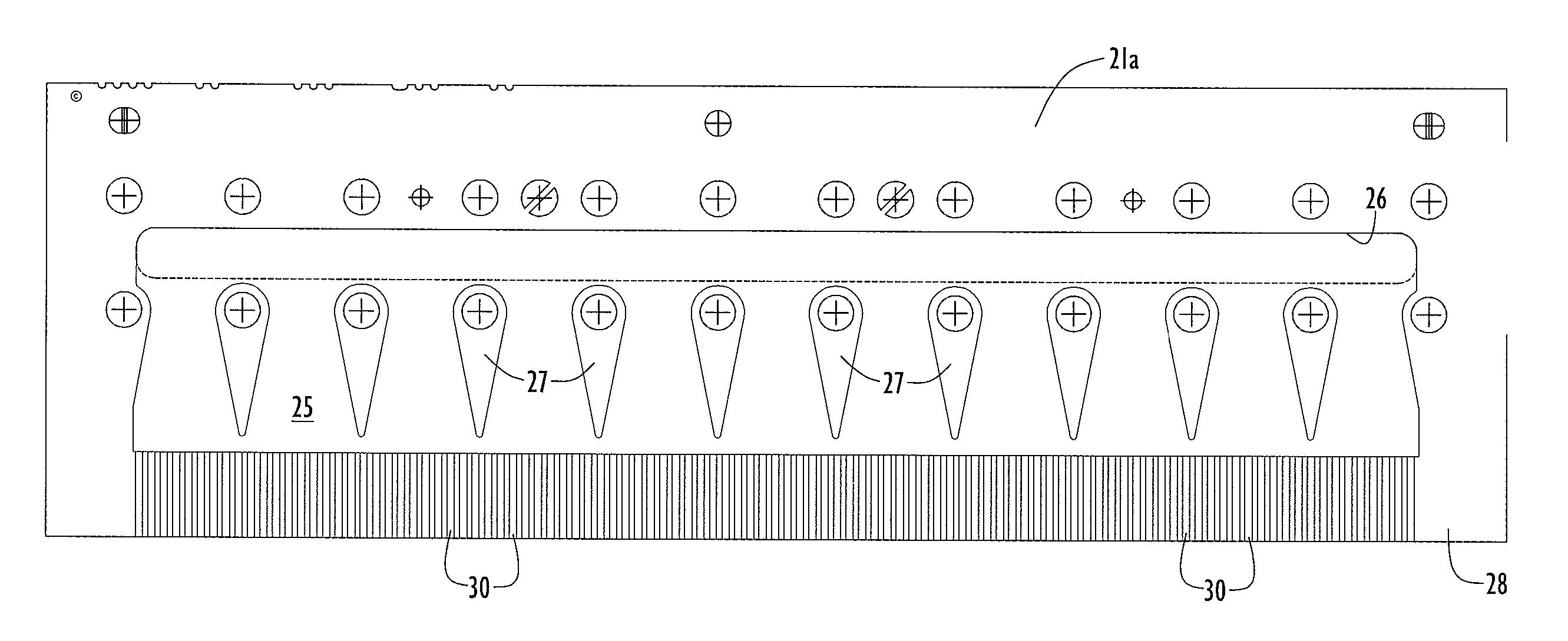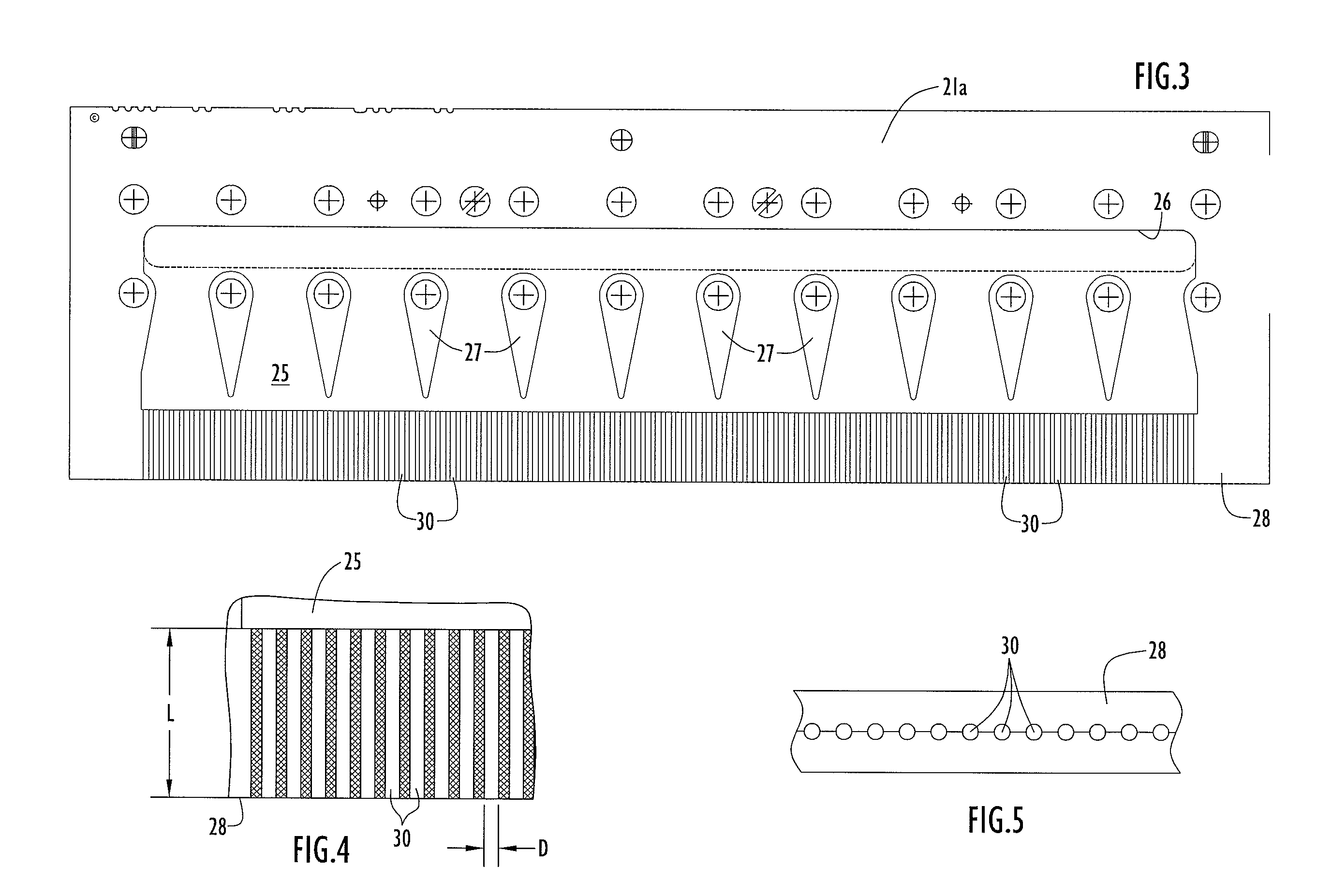Method and apparatus for production of meltblown nanofibers
a nanofiber and meltblown technology, applied in the field of polymer nanofiber production methods and apparatuses, can solve the problems of limited commercial application of nanofibers, low production rate of this process, and inability to have wide commercial application, and achieve low cost, high production rate, and low throughput or polymer flow rate
- Summary
- Abstract
- Description
- Claims
- Application Information
AI Technical Summary
Benefits of technology
Problems solved by technology
Method used
Image
Examples
Embodiment Construction
[0023] The following detailed explanations of the drawings and of the preferred embodiments reveal the methods and apparatus of the present invention.
[0024] Referring more specifically to the drawings, a pump 10 delivers molten polymer received from a polymer inlet 11 to pump block 13 where the polymer is metered and delivered to an inlet manifold 15 of a meltblown spinneret pack 17. The meltblown spinneret pack 17 comprises a first block 19 and a second block 20 secured in close relation to one another along respective surfaces and to respective air jet blocks 23, 24 proximate the downstream or outflow end of the unit.
[0025] Between blocks 19 and 20 there is a thin plate spinneret 21 which, in the preferred and illustrated embodiment, comprises two thin plates 21a and 21b joined flush against one another in any suitable manner. Thin plates 21a and 21b have shallow channels and passages etched or otherwise formed in their abutting surfaces in a pattern that is the same for both pl...
PUM
| Property | Measurement | Unit |
|---|---|---|
| Thickness | aaaaa | aaaaa |
| Thickness | aaaaa | aaaaa |
| Diameter | aaaaa | aaaaa |
Abstract
Description
Claims
Application Information
 Login to View More
Login to View More - R&D
- Intellectual Property
- Life Sciences
- Materials
- Tech Scout
- Unparalleled Data Quality
- Higher Quality Content
- 60% Fewer Hallucinations
Browse by: Latest US Patents, China's latest patents, Technical Efficacy Thesaurus, Application Domain, Technology Topic, Popular Technical Reports.
© 2025 PatSnap. All rights reserved.Legal|Privacy policy|Modern Slavery Act Transparency Statement|Sitemap|About US| Contact US: help@patsnap.com



